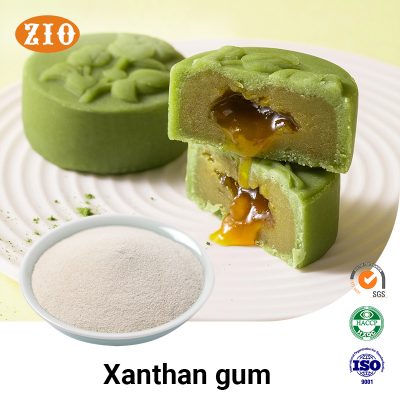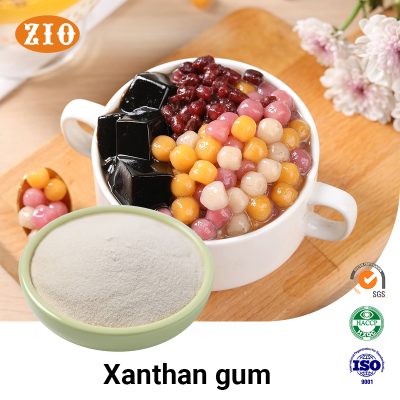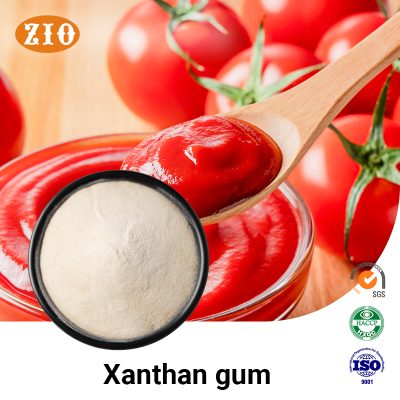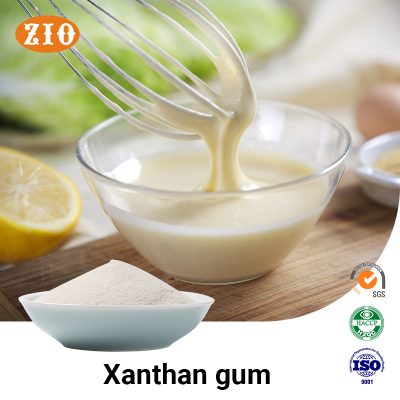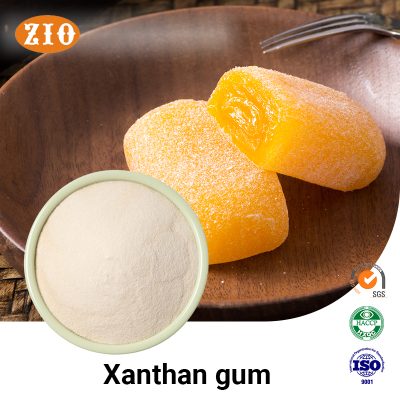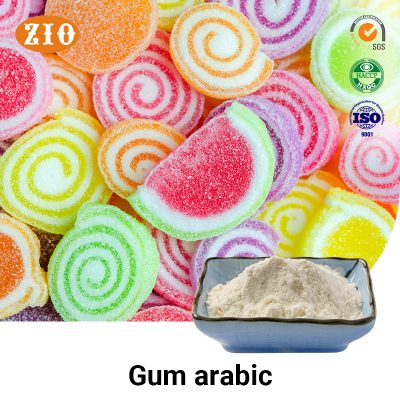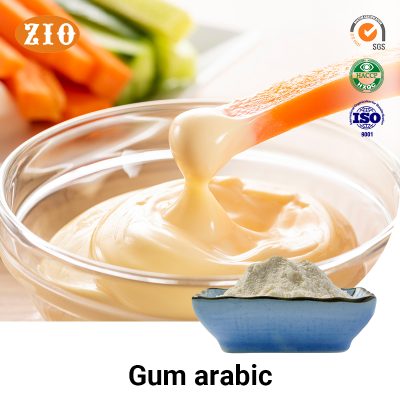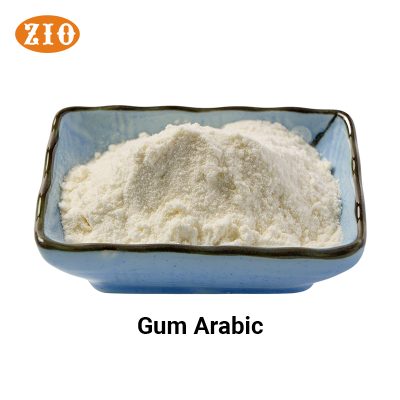What is Xanthan Gum?
Xanthan gum is a natural polysaccharide produced by the fermentation of corn starch or other plant-based carbohydrates using Xanthomonas campestris. As a high-molecular-weight polymer, it exhibits unique rheological properties and provides excellent thickening and stabilizing effects. Discovered in the 1960s and commercialized soon after, xanthan gum is now one of the most widely used food additives and functional ingredients worldwide.
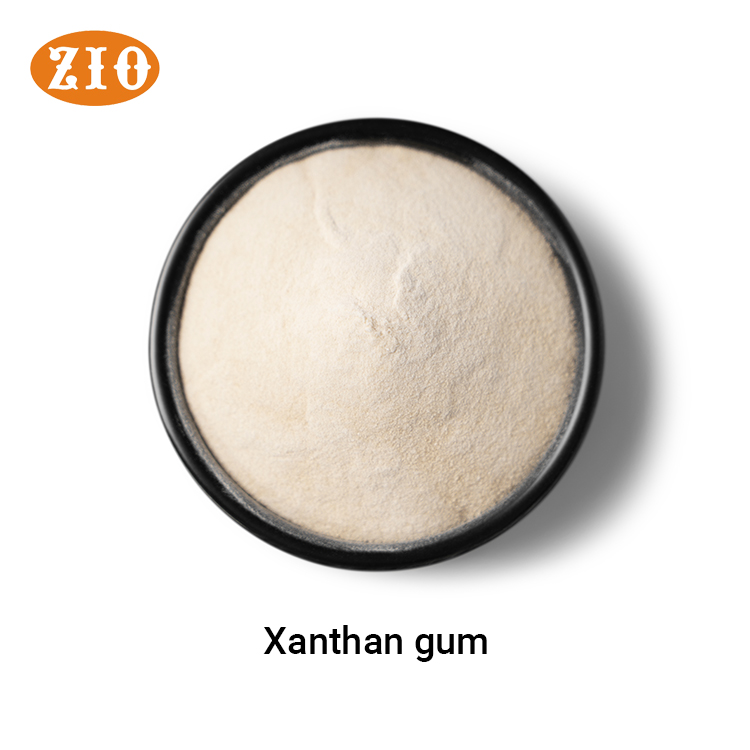
Sources and Production Process
- Raw Materials: Commonly derived from corn, sugarcane, or wheat starch.
- Fermentation: Conducted under aerobic conditions using Xanthomonas campestris.
- Extraction and Drying: The fermented broth undergoes precipitation, separation, and drying to obtain a fine powder.
- Product Form: Xanthan gum is sold as a powder, easily soluble in both cold and hot water.
Physical and Chemical Properties
- Solubility: Soluble in both hot and cold water, forming transparent solutions.
- Thickening Ability: Increases viscosity significantly at very low concentrations (0.1%–0.5%).
- Rheology: Exhibits pseudoplasticity (shear-thinning behavior).
- Thermal Stability: Resistant to degradation during heating and cooling cycles.
- pH Tolerance: Stable across a wide pH range (3–12).
- Salt Resistance: Maintains thickening and suspension even in high-salt environments.
Core Functions of Xanthan Gum
- Thickener: Improves texture and mouthfeel.
- Stabilizer: Prevents separation or precipitation in emulsions.
- Suspending Agent: Keeps particles evenly dispersed in beverages.
- Moisture Retention: Extends shelf life by retaining water.
- Emulsification Aid: Enhances the stability of oil-water mixtures.
Applications Overview
- Food Industry: Ice cream, salad dressings, sauces, bakery products, jams.
- Beverages: Juices, sports drinks, probiotic beverages.
- Pharmaceuticals: Sustained-release tablets, syrups.
- Cosmetics: Lotions, facial cleansers, conditioners.
- Oil Industry: Drilling fluids thickener.
Safety and Regulatory Status
Xanthan gum is recognized as safe by major regulatory bodies:
- JECFA (FAO/WHO): Approved food additive.
- FDA (USA): Classified as GRAS (Generally Recognized as Safe).
- EFSA (EU): Approved as E415 in food applications.
Market Trends and Outlook
Driven by the rising demand for plant-based diets, clean-label ingredients, and functional foods, the xanthan gum market is expected to grow steadily. Its versatility and sustainable production make it a key ingredient for the future.
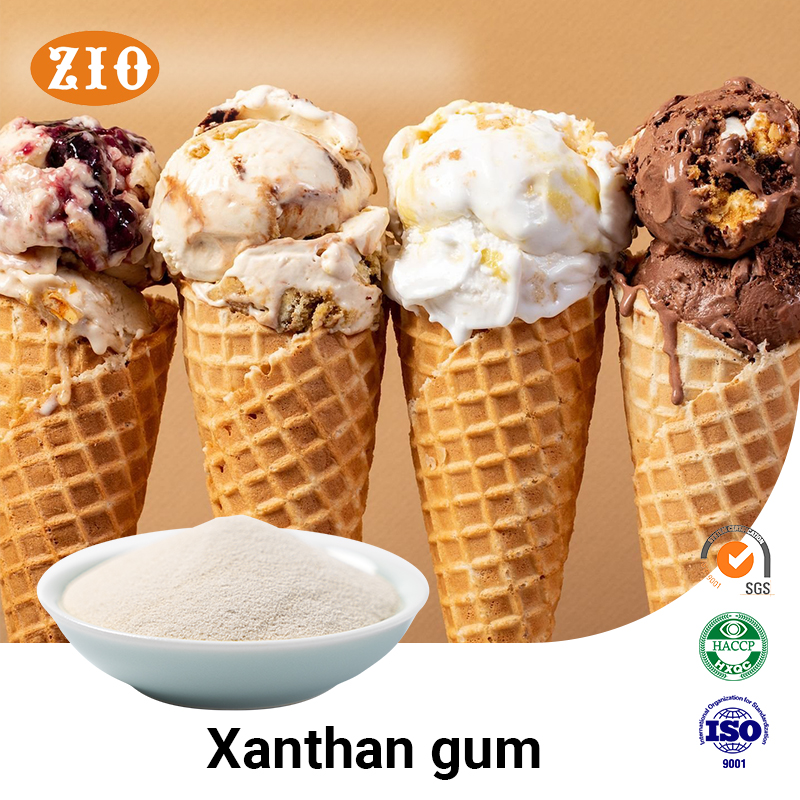
Frequently Asked Questions (FAQ)
Q1: Is xanthan gum harmful to health?
A1: No. It is considered safe at approved usage levels.
Q2: Is xanthan gum vegan-friendly?
A2: Yes. It is produced from plant-based starch and microbial fermentation, making it suitable for vegan and halal diets.
Q3: How is xanthan gum different from gelatin?
A3: Gelatin is animal-derived, while xanthan gum is plant-based, making it more suitable for vegetarian and vegan applications.


 TOP5 citric acid products sold in china by 2024
TOP5 citric acid products sold in china by 2024